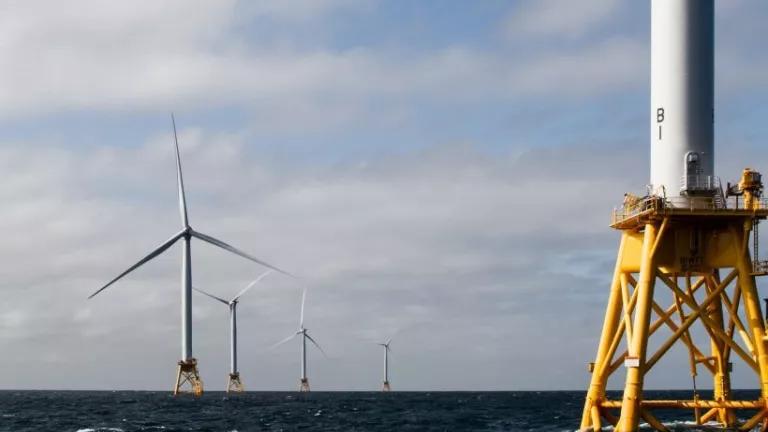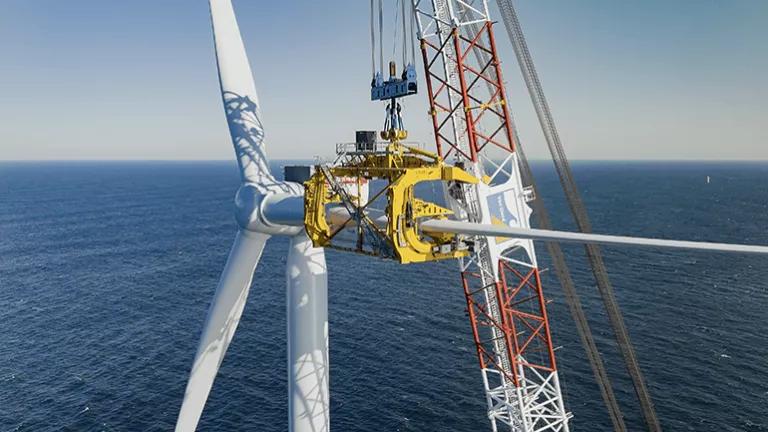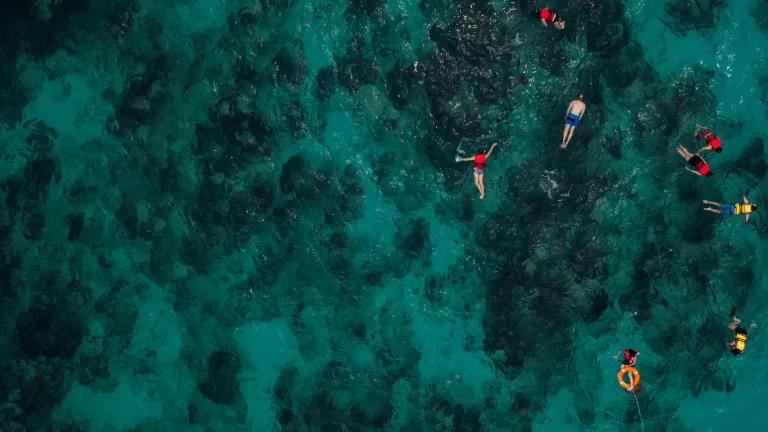Smart Siting of Offshore Wind Protects Critically Endangered Gulf of Mexico Whale
The industry must advance responsibly in this new offshore wind region to protect marine mammals.

The Gulf of Mexico whale is one of the most endangered marine mammals on the planet.
NOAA Fisheries (Permit # NMFS MMPA/ESA 14450 and 21938)
The first two areas identified for potential offshore wind development in the Gulf of Mexico are located away from important habitat for critically endangered Gulf of Mexico whales, helping the industry advance responsibly in this new offshore wind region.
Gulf of Mexico whales (also known as Rice’s whales) were only recently identified as a new species and are the only large whale to fully reside in the Gulf of Mexico. They are elusive, occupying habitat areas far offshore, but fascinating in nature with a long sleek form and a call type unique among baleen whales.
They are also one of the most endangered large whale species in existence. Best estimates suggest only 51 individual Gulf of Mexico whales remain and those few individuals are threatened by a myriad of human activities, including oil and gas development, vessel strikes, and underwater noise. The species also suffered to a horrifying degree as a result of the Deepwater Horizon oil spill, which devastated the Gulf in 2010. Almost half of the Gulf of Mexico whale’s known habitat was oiled, and 17 percent of the population is estimated to have been killed.

Offshore wind is emerging as a new clean energy industry in the Gulf of Mexico
We need offshore wind, and we need to do it right. Offshore wind is critical to reaching our national climate goals, promising healthier air, and creating thousands of well-paying clean energy jobs. But as we fight climate change, we can and must avoid, minimize, and mitigate threats to ocean life. Taking action to avoid, minimize, and mitigate impacts to endangered and protected species is key to ensuring offshore wind development is done in a smart way that protects our valuable and vulnerable wildlife.
The two draft Wind Energy Areas (WEAs) issued by the Bureau of Ocean Energy Management (BOEM), the federal agency mandated with permitting offshore wind energy in the United States, identify the first areas where offshore wind may be developed in the Gulf of Mexico. The first draft WEA is located approximately 24 nautical miles off the coast of Galveston, TX, and the second area is located approximately 56 nautical miles off the coast of Lake Charles, LA.

Two proposed Wind Energy Areas lie shoreward of the 100-m depth contour, avoiding important Gulf of Mexico whale habitat between the 100-m and 400-m depth contours
These two areas avoid any overlap with the Gulf of Mexico whale’s habitat, which, in the area of the western and central Gulf of Mexico, lies along the continental shelf break between the 100-meter and 400-meter depth contours. This smart siting decision by BOEM—that also reasonably avoids waters close to those contours—would allow developers to bid on leases in areas that are outside of Gulf of Mexico whale’s habitat.
The two draft WEAs also avoid important habitat areas for several vulnerable coastal bottlenose dolphin populations that reside within 20 nautical miles of the coast. Potential disturbance to dolphins by vessel traffic and cable surveying and laying activities must still be minimized and mitigated as much as possible if the industry moves forward, however.
The Gulf of Mexico is the most important flyway for neotropical migratory birds in North America. Billions of nocturnal migratory birds that fly over the Gulf during the day and night rest at stopover areas along the coast. The draft WEAs avoid certain areas where birds are known to occur at particularly high densities, including within 12 nautical miles from shore, as well as areas near colonial nesting bird rookeries and some known feeding hotspots, offering protection to these vulnerable species. Moving forward, it will be important for BOEM to proactively consider new monitoring information to ensure that bird species that are expected to forage within the draft WEAs, and are highly vulnerable to collision and displacement, are also protected.
The draft WEAs also avoid the recently expanded Flower Garden Banks National Marine Sanctuary, which includes a chain of 17 reefs and banks located 80-125 miles off the coast of Texas and Louisiana. The Sanctuary protects some of the healthiest and most resilient coral reef communities in the Caribbean and western Atlantic region including salt domes, or underwater mountains, on which reef-building corals live.
Overall, the draft WEAs indicate that offshore wind is moving ahead in the Gulf of Mexico in a way that is protective of marine life. We hope to see this trend continue as the process moves forward.




